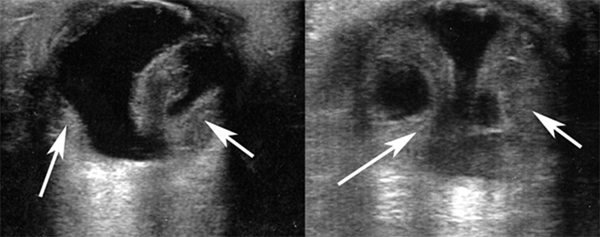Perioperative spontaneous bilateral suprachoroidal hemorrhage
Main Article Content
Abstract
Suprachoroidal hemorrhage is a rare condition, occurring most commonly in the perioperative period, although cases of unilateral spontaneous hemorrhages have been reported. We report a case of bilateral spontaneous suprachoroidal hemorrhage and discuss the potential causative factors.
Downloads
Article Details

This work is licensed under a Creative Commons Attribution-NonCommercial-NoDerivatives 4.0 International License.
References
Hammam T, Madhavan C. Spontaneous suprachoroidal haemorrhage following a valsalva manoeuvre. Eye (Lond) 2003;17:261-2.
Levy J, Tessler Z, Klemperer I, et al. Late bilateral acute angle-closure glaucoma after administration of paroxetine in a patient with plateau iris configuration. Can J Ophthalmol 2004;39:780-1.
Parthasarathi S, Myint K, Singh G, et al. Bilateral acetazolamide-induced choroidal effusion following cataract surgery. Eye (Lond) 2007;21:870-2.
Chandra A, Barsam A, Hugkulstone C. A spontaneous suprachoroidal haemorrhage: A Case Report. Cases J 2009;2:185.
Fukuchi T, Suda K, Matsuda H, et al. Secondary acute angle closure with spontaneous suprachoroidal haemorrhage suspected by ultrasound biomicroscopic examination. Jpn J Ophthalmol 2009, 53:661-3.
Moshfeghi DM, Kim BY, Kaiser PK, Sears JE, Smith SD. Appositional suprachoroidal hemorrhage: A case-control study. Am J Ophthalmol 2004;138:959-63.
Chu TG, Green RL. Suprachoroidal hemorrhage. Surv Ophthalmol 1999;43:471-86.




